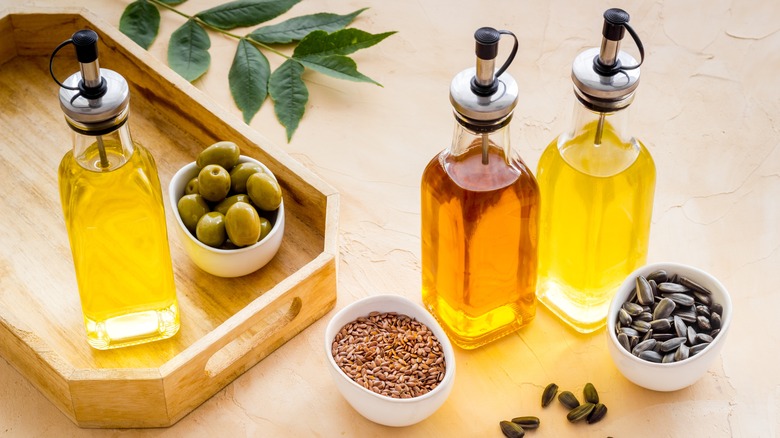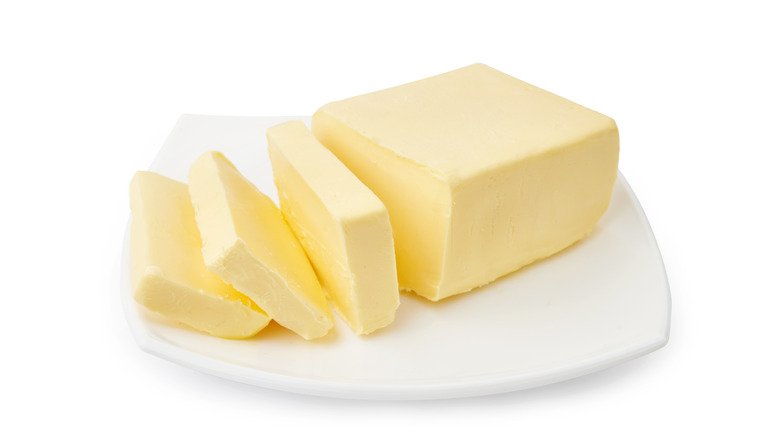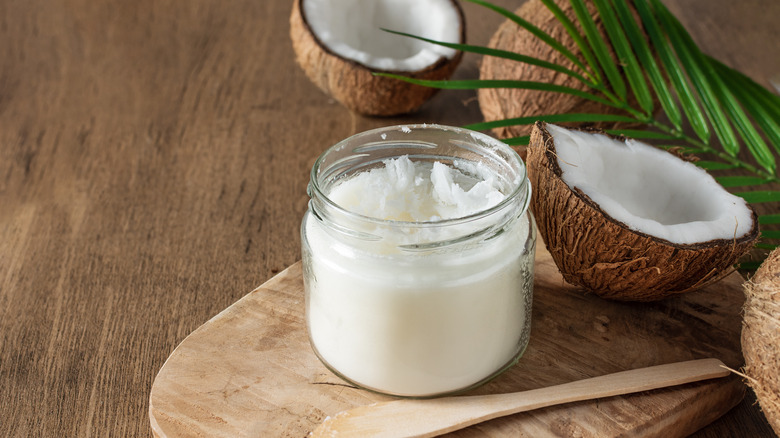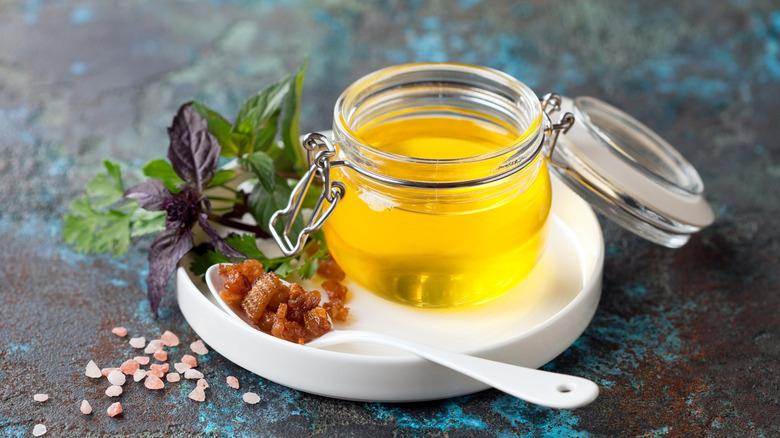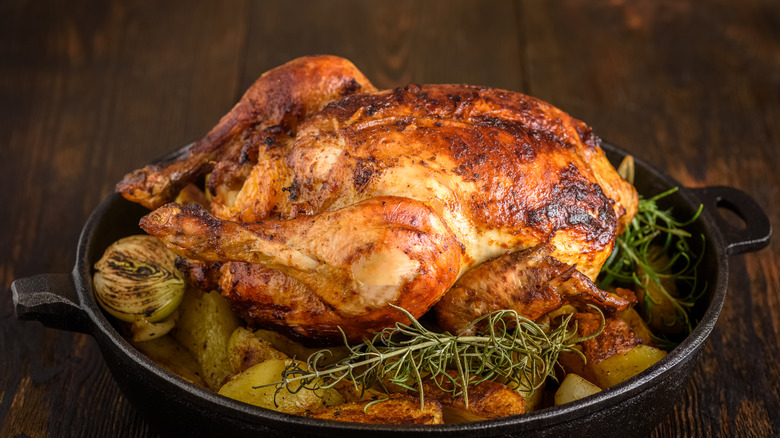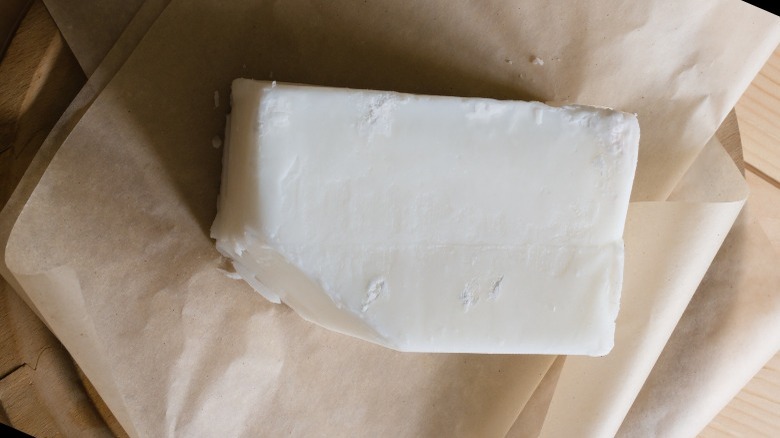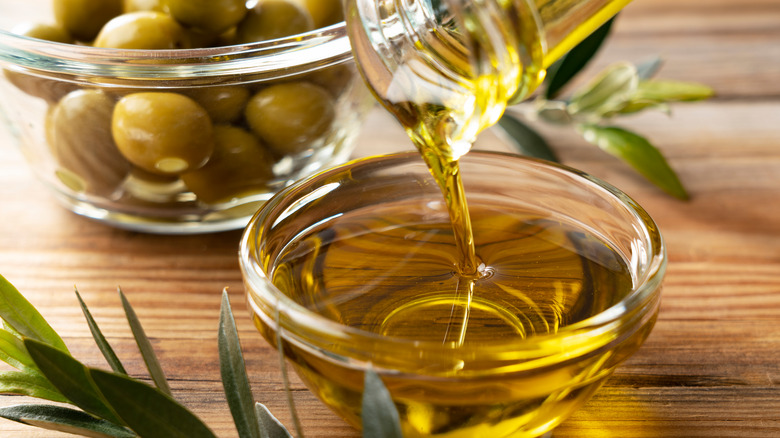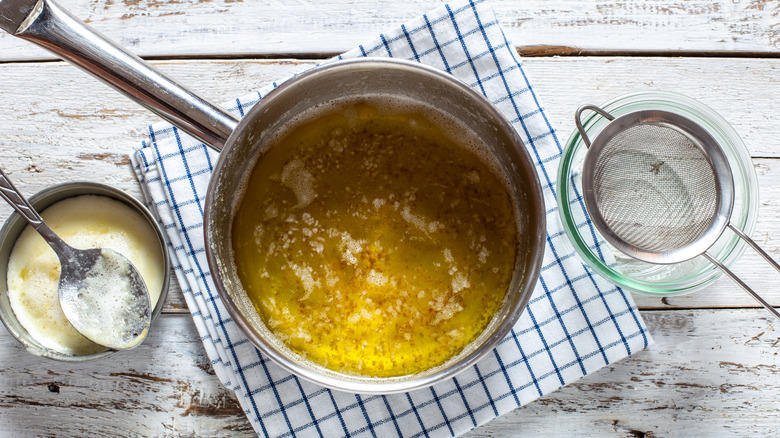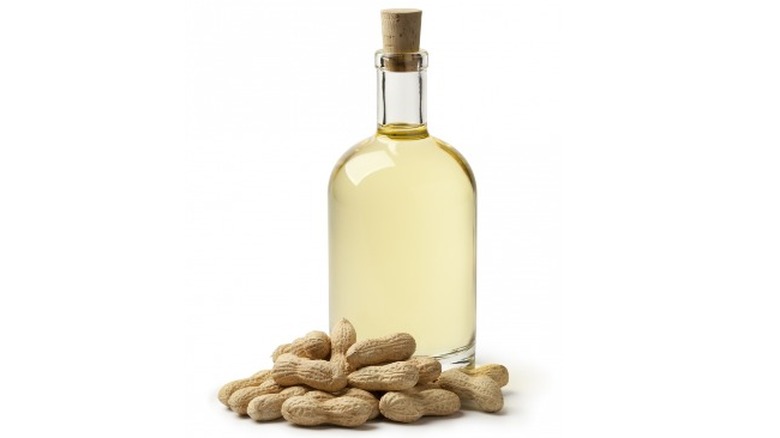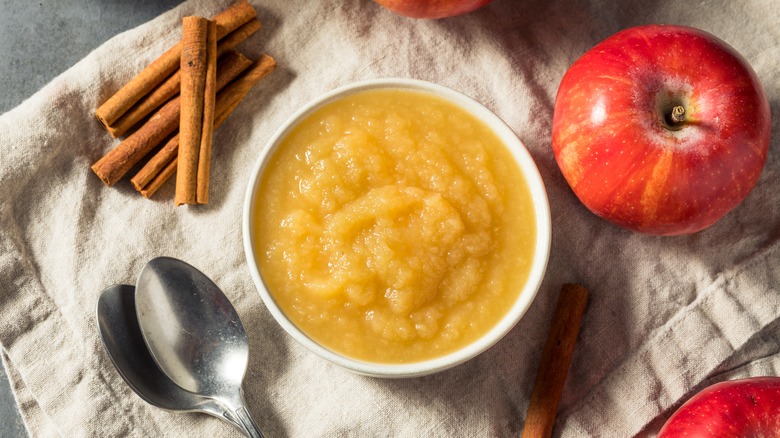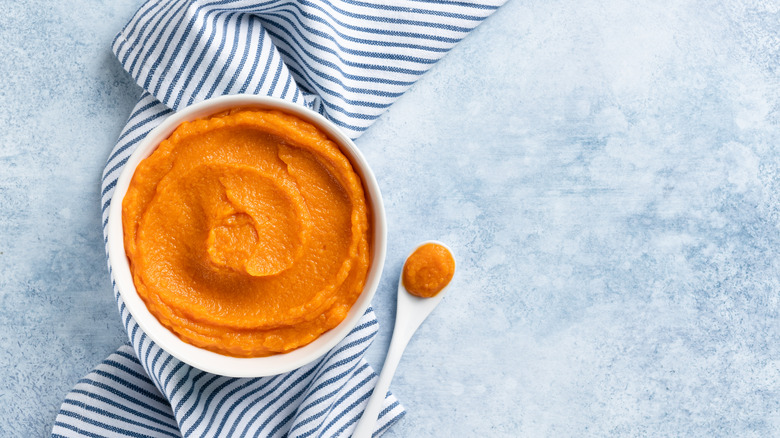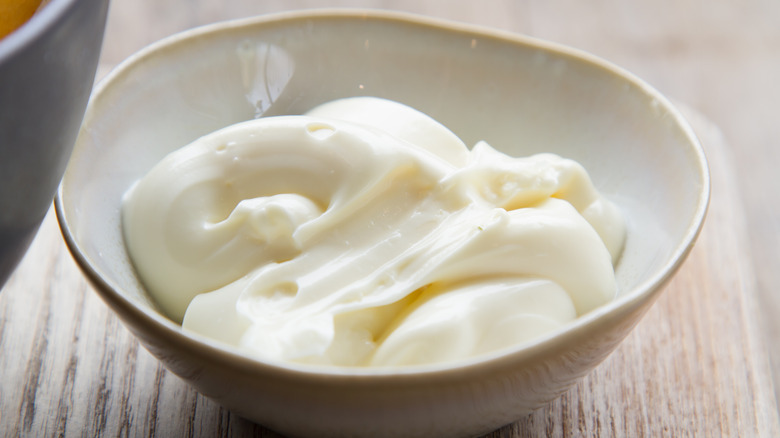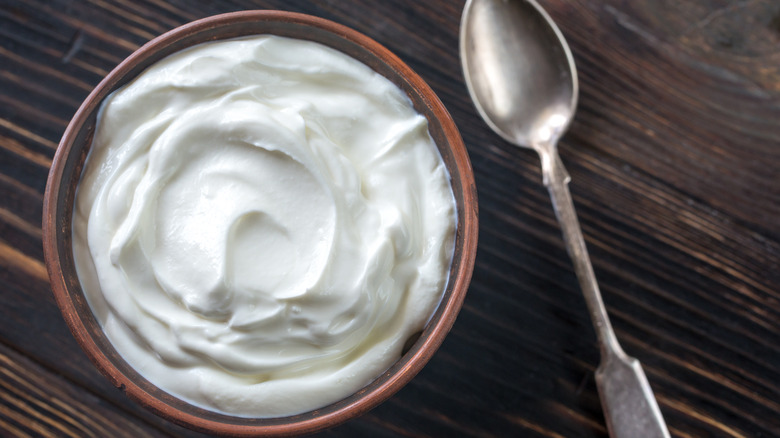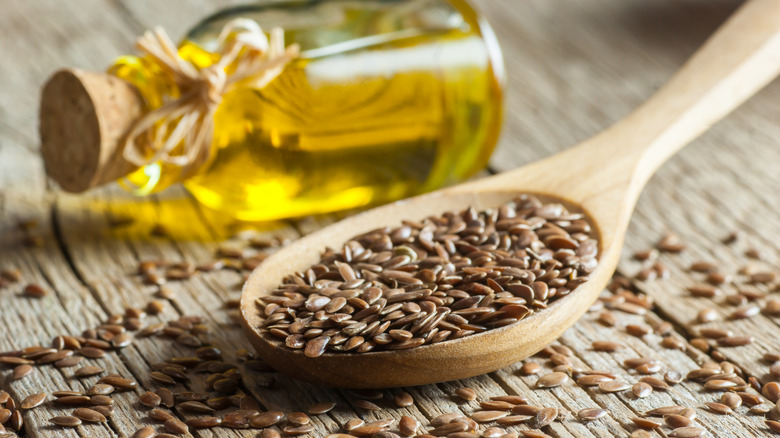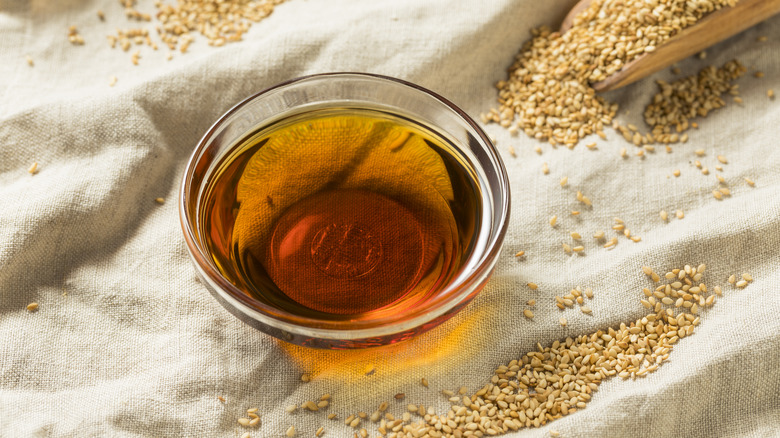The 15 Absolute Best Vegetable Oil Substitutes
Fats are a basic building block of almost all cooking and a crucial part of every human being's diet. These fats are derived from a multitude of sources, including both plants and animals. The exact type of fat used in any recipe matters and can affect the flavor and visual appeal. One of the most commonly used fats for cooking in America is vegetable oil. While many different kinds of plant and seed oils are technically vegetable oils, when you see a bottle of vegetable oil on the shelf at the supermarket it is most likely either soybean, corn, safflower, or canola oil. These oils are extracted from the plant or seed using various industrialized methods.
Many people avoid these types of oils for numerous health or dietary reasons, while others may be looking for substitutions for no other reason than that they find themselves fresh out at the worst possible moment. In either case, we've rounded up some of the best substitutions for vegetable oil in any situation, from searing meat to baking a cake.
1. Butter
The gloriously rich and flavorful ingredient we call butter is one of the single best items in the culinary world. Butter is a product made from churned cow's cream and is essentially the result of removing the liquid from the cream, leaving only the fat. Some milk solids remain, which is what actually turns brown when making browned butter. Cooking with butter is hardly a foreign concept, though there are some crucial tips you need to achieve the best results.
This is definitely not a recommended substitution in any place where it may come into contact with colder temperatures. For example, melted butter substituted into salad dressing will result in a congealed, greasy mess with an extremely unappealing mouthfeel. Butter can be a good substitute when cooking meat — just watch the heat as butter can brown and burn when exposed to very high temperatures. Baking recipes that call for oil will almost certainly taste better with melted butter substituted in.
Substituting butter for vegetable oil can be done in equal amounts (e.g., one tablespoon of oil to one tablespoon of butter).
2. Coconut oil
Coconut oil is a particularly interesting fat to cook with as it has an extremely high amount of saturated fat, which makes it solid at room temperature. Vegetable oil remains liquid even at cold temperatures, which makes it ideal for use in recipes that will be subjected to colder temperatures, like salad dressings or marinades.
There are two different kinds of coconut oil: refined and unrefined. Refined coconut oil has no real flavor to speak of, while unrefined, though less processed, has a distinctive flavor that can transfer to foods cooked with it. Refined oil also has a higher smoke point than unrefined, which means it can work well as a substitute for frying or searing. Unrefined oil will impart some flavor, but its low smoke point likely won't affect baked goods negatively and is a great substitute in vegan or paleo baking.
For best results, substitute an equal amount of either refined or unrefined coconut oil for vegetable oil in your recipe.
3. Duck fat
There is an ancient tradition of substituting cooking fats for duck fat. As history tells it, the Jews brought this technique with them from Egypt to Europe, where the standard cooking fats were dairy-based and off-limits in a Kosher diet. In more recent times, liquid duck fat is a decadent ingredient commonly used in French cuisine — most famously in duck confit. This fat is also preferred by those keeping a paleo diet as it is derived from a more natural, less processed source.
While expensive, duck fat works as a substitution for vegetable oil in many different applications, such as searing meat, roasting vegetables, or even frying chicken. One benefit of this substitute is that duck fat can be reused multiple times, provided it is strained after each use. The flavor of duck is strong, so avoid using this in any kind of baking or pastry recipe.
Duck fat in its liquid state can be used in place of vegetable oil in a one-to-one ratio.
4. Chicken fat
Chicken fat (or schmaltz as it is referred to in Yiddish) has many of the same properties as duck fat. This ingredient is the rendered fat of a chicken and is something you are no doubt already familiar with if you have ever roasted a chicken over a bed of potatoes. The potatoes soak up the glorious melted fat, which provides the ideal medium to conduct the heat of the oven to produce a gorgeous, golden brown exterior.
Chicken fat may be more difficult to find commercially than duck fat, but it is easier to make at home. Save the pan drippings from a roasted chicken and allow the liquid to separate. Refrigerate until cold and the fat will rise to the top and harden. Scoop it off and save it for later use. Like duck fat, chicken fat isn't ideal for baking or pastry recipes but will work wonders when roasting vegetables or searing meat.
Liquid chicken fat can be substituted for vegetable oil in equal amounts.
5. Beef tallow
Beef tallow is just like chicken and duck fat in that it is the pure, rendered fat of the animal. Before the industrial revolution, today's commonly used vegetable oils were difficult to find or expensive to import. The widespread use farming of beef meant that most homes used beef tallow as a common cooking fat, as it has a high smoke point and will not spoil for months at room temperature.
In most cases, beef tallow as a substitute for vegetable oil is restricted to savory use. That being said, savory baking recipes, such as biscuits or pie crust, could be a delicious outlet for this product. The absolute best uses for beef tallow include roasting or searing meat, sauteing vegetables, or even making fried rice. It has a distinct and delicious flavor, so keep that in mind when subbing it in.
Beef tallow can be used to replace vegetable oil in an equal proportion.
6. Olive oil
Even though it has been consumed in the Mediterranean for centuries, widespread use of olive oil in the United States didn't really begin until the 1990s. Olive oil began to become popular due to a widespread campaign to promote the product stateside. Since then, olive oil has quickly become one of the most popular cooking oils used in America and is loved by chefs and home cooks alike for its impeccable flavor and heart-healthy properties. Olive oil is made from pressing olives, and the exact method of this extraction determines the quality of the final product.
Unlike virtually every other cooking oil, there are different grades of olive oil that are more or less appropriate for different uses. High-quality, extra-virgin olive oil has a delicious and delicate flavor and is best suited for raw applications such as drizzled over bread or made into salad dressing. Refined olive oils (which may be marketed as "light-tasting") are best for grilling or searing as they have a higher smoke point and a more neutral flavor.
Olive oil can be substituted for vegetable oil in virtually any recipe or dish, from vinaigrettes to mayonnaise to fried food. Even certain baking recipes can benefit from the replacement, so long as the flavors can pair with the olive taste (such as chocolate cake).
7. Ghee
Ghee is a product made from butter, but it has undergone a few additional steps in manufacturing. Like clarified butter, ghee starts as melted butter that then has the milk solids and water removed, leaving behind pure fat. Ghee can be a keto-friendly replacement for butter, as the milk solids that contain protein and sugar have been filtered out. Cooking with ghee is very similar to cooking with butter, but there are a few key tips to remember.
Ghee has a higher smoke point than butter, which can make it suitable for use in high-temperature applications, like searing, roasting, or frying. This item can make a great substitution for vegetable oil when you need the same resistance to heat but desire a deeper, richer flavor. Dishes that require a more subtle flavor from oil will not work well for this substitution as ghee has a strong and distinctive taste.
Ghee can be used as a replacement for vegetable oil in equal amounts.
8. Peanut oil
Peanut oil is a type of oil made from peanuts, which are botanically a legume but used culinarily as a nut. People with peanut allergies can safely consume peanut oil that has been refined as the process removes the components that cause the allergic reaction.
Peanut oil is probably one of the best substitutions for vegetable oil when it comes to frying, and frying is indeed one its most common uses. Many commercial kitchens use peanut oil for frying due to its low cost and high smoke point. If you are looking for a substitute for vegetable oil to increase flavor, you'll have to look elsewhere. The same refining process that removes the allergy-causing components in peanut oil also removes any flavor (which is another reason it makes a good frying oil).
Peanut oil can easily be substituted for vegetable oil and vice versa. Simply swap one for the other in even amounts.
9. Avocado oil
A century ago, avocados were considered a bizarre and exotic fruit. These days, due to large-scale campaigns to increase consumption, avocados are everywhere and the culinary and health benefits are becoming well known. Even avocado oil is becoming more commonly found in grocery stores and supermarkets, which is a great thing for cooks looking to move away from other kinds of vegetable oils. Avocado oil is heart-healthy and has a high enough smoke point to make it suitable for high heat, plus it complies with both keto and paleo diet rules.
Avocado oil is great for sauteing due to its neutral flavor and high smoke point. While avocado oil has the wonderful benefit of being high in healthy vitamins and compounds, you may want to reconsider using it for frying. Once the oil is exposed to heat for a long time, the nutrients dissipate, making it no healthier than much cheaper alternatives.
Avocado oil is very similar to vegetable oil and can be substituted in a one-to-one ratio.
10. Applesauce
For a true departure from all fats, there is one ingredient that is used in vegan and healthy baking that can work. Applesauce, the pureed form of apples, has a specific composition that makes it a substitution for oil in some recipes. Store-bought applesauce is perfectly fine, though avoid any that have cinnamon or added sugar.
Now, this substitution really only works in certain applications and it can't replace oil or fat for roasting, sauteing, or searing. In baking, oil provides the function of adding moisture and keeping baked goods tender. Cupcakes, muffins, banana bread, and even brownies are recipes where a swap of applesauce for oil can work. This hack also works for boxed cake mix, though for subtle flavors like vanilla and the apple flavor of the applesauce may poke through a bit.
Typically, the ratio for substitution here is one-to-one, meaning 1/4 cup of applesauce can be used in place of 1/4 cup of oil.
11. Pumpkin puree
There's a reason you should always have canned pumpkin in your pantry, and no, it's not to make pumpkin pie. Much like applesauce, canned pumpkin puree (or homemade, if you've got it) works as a swap for oil in baking recipes. This substitution cuts do down on overall fat, and unlike butter, doesn't add any dairy to the recipe. Pumpkin puree also has the added benefit of a variety of nutrients that vegetable oils may not deliver, such as vitamin K and beta-carotene.
Pumpkin puree does have some serious limitations when substituting for vegetable oil, mainly because it can only be swapped in baking recipes. Those baking recipes should be things like cakes, brownies, muffins, or recipes where the oil is only there to add texture. Roasting, searing, and frying simply won't tolerate this substitution so we do not recommend it.
Pumpkin can be swapped in for vegetable oil in an even, one-to-one ratio.
12. Mayonnaise
We know mayonnaise can be a controversial ingredient for many people who dislike the flavor or don't trust the texture. The reality is that mayonnaise is simply egg yolks emulsified with oil (and sometimes acids, like vinegar, added for taste). If these base ingredients were broken down into their individual elements, no one would think twice about using them in a cake or muffin. While it might seem weird, mayonnaise can be used as a substitute for oil in some baking recipes.
Swapping mayo for oil in cake mix not only saves you in a pinch, but there is some evidence that it may also contribute to a more moist and flavorful cake. Using that logic, this switch will likely work in any baking recipe that calls for both oil and eggs. Any recipe where oil is used on its own, like for sauteing or frying, is completely out. That being said, there are recipes for mayo-roasted turkey and chicken that produce fabulously tender and moist results.
Mayonnaise can be swapped for oil in an even amount.
13. Greek yogurt
Another substitution for oil in baking recipes that also comes with a boost of protein is Greek yogurt. It's a type of fermented dairy product that has been strained to remove the whey. Compared to "regular" yogurt, Greek yogurt is much thicker and is higher in protein and fat. The flavor is much richer as well, which can give cakes and muffins a very desirable texture.
Greek yogurt can be substituted for vegetable oil in certain baking recipes. If the oil is in the recipe to add moisture, swapping in Greek yogurt can provide the same benefit but with the added bonus of an extra boost of protein. Greek yogurt is a dairy product so this substitute is not suitable for vegans or those avoiding dairy for one reason or another.
Swapping Greek yogurt in for vegetable oil should be done in equal amounts. If a recipe calls for one cup of vegetable oil, simply replace it with one cup of Greek yogurt.
14. Flaxseed oil
Like other seed oils, flaxseed oil (sometimes called linseed oil) is made by pressing flaxseeds. There are many industrial uses for flaxseed oil, but the edible kind is made from raw, cold-pressed flaxseed. While not one of the more commonly used seed oils, flaxseed is known for its health benefits as it contains high levels of α-Linolenic acid, a heart-healthy omega-3 fatty acid. Flaxseed oil can even be a great substitute for vegetable oil when seasoning a cast iron griddle.
Since flaxseed oil has a very low smoke point compared to other seed and vegetable oils (225 degrees F), you should avoid using this product in any kind of situation where heat is applied. It can be used in raw recipes, such as dressings, dips, or spreads. It can even be a delicious finishing oil for grains or roasted vegetables.
Flaxseed oil can be exchanged with vegetable oil in equal proportions.
15. Sesame oil
Sesame oil is a cooking oil popular in Asian cuisine that is derived from pressing sesame seeds. Oil extracted from raw seeds is light and neutral in taste and is suitable for cooking with heat. Oil pressed from toasted seeds is known as toasted sesame oil, and has that characteristic nutty flavor. Most of the recipes that call for sesame oil will have you using the toasted oil in a raw application, such as in a slaw or drizzled on top at the end.
In general, sesame oil can work in place of vegetable oil in certain amounts. Because toasted sesame oil has a very strong flavor, this substitute should only be used if a recipe calls for no more than a few tablespoons of vegetable oil. Refined sesame oil can be a good option for searing or roasting, as the smoke point is around 410 degrees F. This type of sesame oil is more similar to vegetable oil but less commonly found in America.
Either kind of sesame oil can be used in place of vegetable oil in equal amounts.
